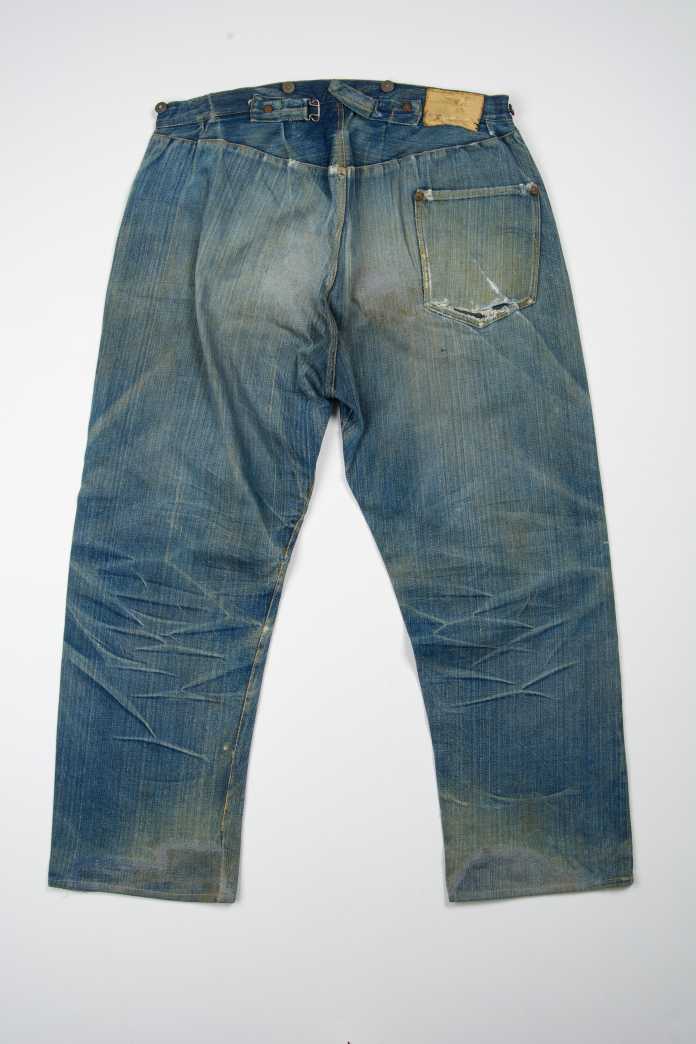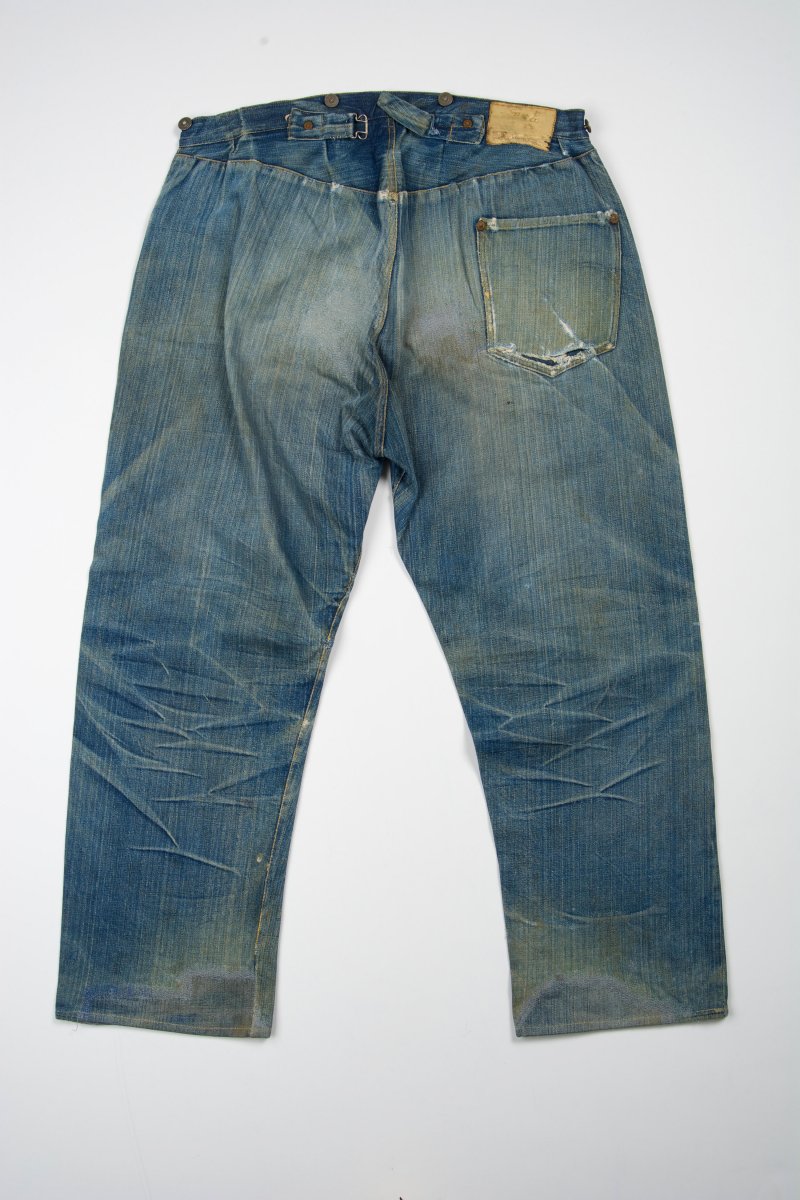The world‘s first jeans had what is now called boyfriend style. It was casual and wide-cut, and also quite “eco” because it was durable and purely vegetable-dyed. However, it was not worn by a cool cowboy with a fag in the corner of his mouth – as the majority in a survey of acquaintances thought – but by a gold digger.
The story began in 19th-century America, when hundreds of thousands of Americans headed west to collect gold nuggets in California. Only very few made the big bucks, in contrast to many traders who provided the workers with the essentials. One of them was Levi Strauss, whose first name was “Löbi” according to his birth certificate. He was an immigrant from Buttenheim in Bavaria. In San Francisco he sold, among other things, toothbrushes, buttons and fabrics from which clothing and tents were tailored.

A pair of jeans from 1879: The durability is exemplary.
(Image: Levi Strauss & Co. Archives)
Gold diggers were enthusiastic about the longevity of the rivet pants
One winter day in the 1870s, the Latvian tailor Jacob Davis from Reno, Nevada, visited him and presented a particularly robust pair of trousers. Davis had hammered metal rivets into the corners of the pocket seams and into the seams at the crotch of the trousers. The gold diggers were enthusiastic about the longevity of the rivet pants. In a very short time, the pants were in such demand that Davis couldn’t keep up with the sewing. Now he wanted to get Strauss on board as an investor – and he agreed.

Artificial intelligence went mainstream almost overnight with ChatGPT. How do we deal with the changes that the big AI models will bring about? That’s what the new issue of MIT Technology Review is all about. Highlights from the magazine:
The US patent that was supposed to protect the rivet idea is number 139121 and was issued on May 20, 1873. This day is considered the birth of jeans, which were initially called “waist overalls”. It was simply pulled over to work. The name jeans only came about in the 20th century and referred to the city of Genoa, where the fabrics for the rivet pants were currently traded.
It is not known whether Strauss and Davis toasted their invention. The occasion would have given it, at least in retrospect, in any case. Because after the gold diggers, farmers, lumberjacks and cowboys also liked the robust trousers and the enthusiasm for jeans spread further. Today, blue cotton pants are among the most popular items of clothing almost everywhere in the world, across all social classes.
On average, Germans have seven jeans models in their closets
Levi’s are still available too. Around 60 pairs of jeans are produced every second worldwide. Incidentally, the Germans have an average of seven models in their wardrobes, whether straight-legged or flared, oversized or so tight that you can hardly get in, let alone out, sometimes cut hip-deep, sometimes high to the waist, and jeans, those before are perforated the first time you wear them: from the point of view of the inventor, this is certainly madness.
But back to the beginning: The triumph of jeans is not only due to the rivets, but also to the blue-dyed cotton threads, which are woven with originally white threads and then result in a mixed color that forgives stains. The typical denim blue, which wears out mechanically but not when washed, was obtained from the leaves of the indigo plant in the first few decades. This, however, often under brutal conditions. Because American producers abused slaves and their knowledge of indigo from Africa for cultivation and production.
It’s not the only eyesore in the history of denim. Poor working conditions and environmental sins in production repeatedly make headlines. Among other things, because the synthetic indigo used today also has its pitfalls: It is usually made from the toxic and carcinogenic chemical aniline, and the toxic waste water from the textile factories often ends up in fields and rivers. In addition, jeans production consumes vast amounts of water, around 7500 liters per pair of trousers. The use of pesticides in cotton cultivation also harms the environment.
After all, some companies are slowly changing course. Start-ups also offer plant-dyed jeans made from organic or recycled cotton. And nowadays you can even lease jeans to optimize reuse and recycling. What would the fathers of jeans, Strauss and Davis, have thought of this?

(Older brother)
